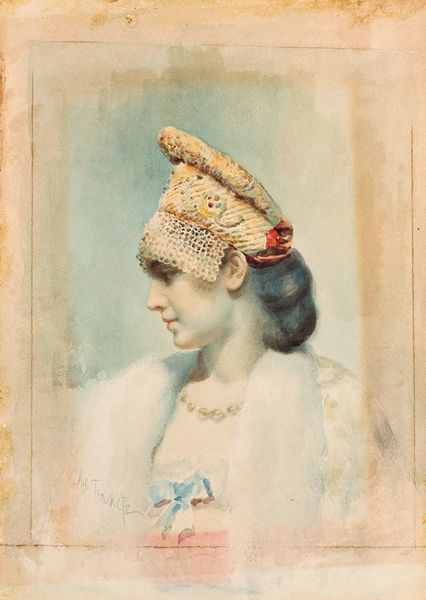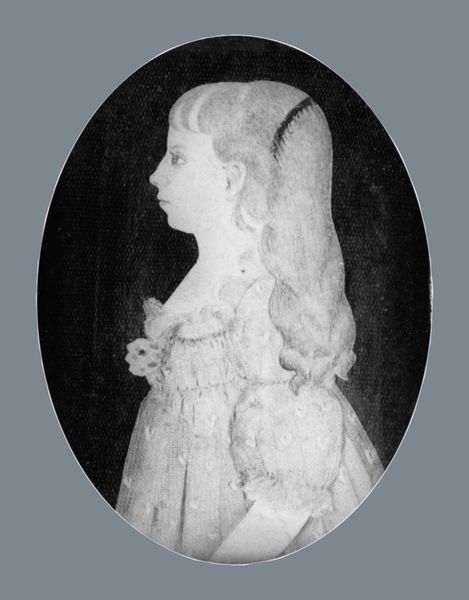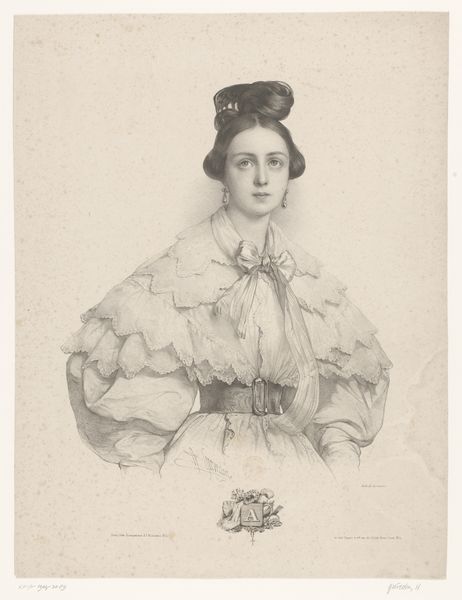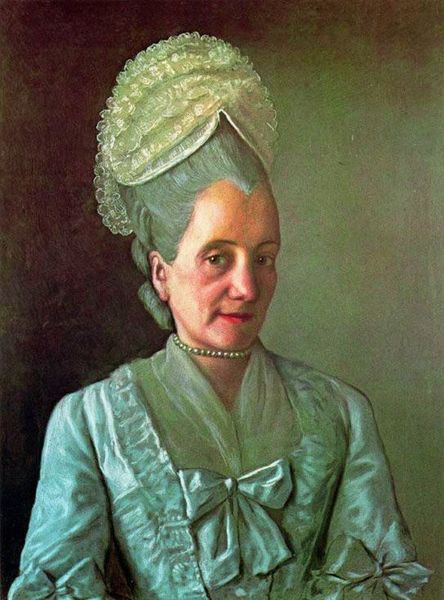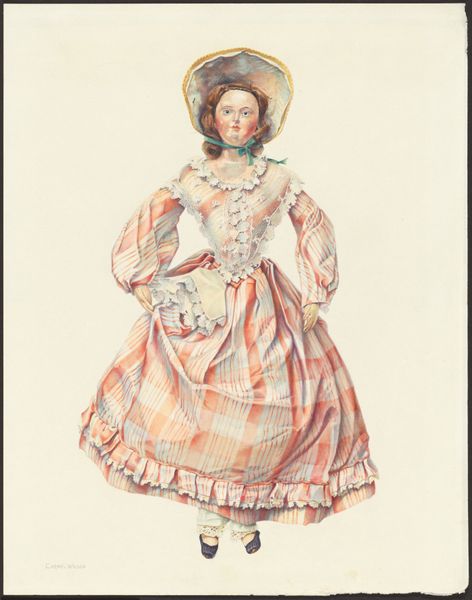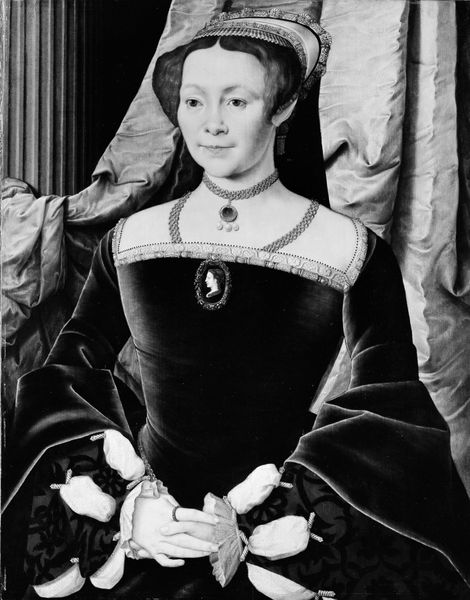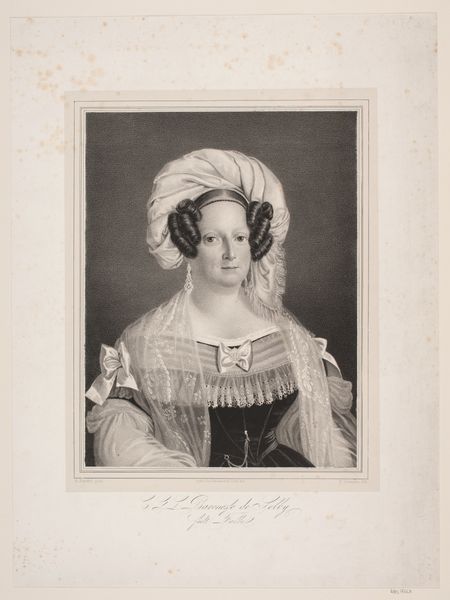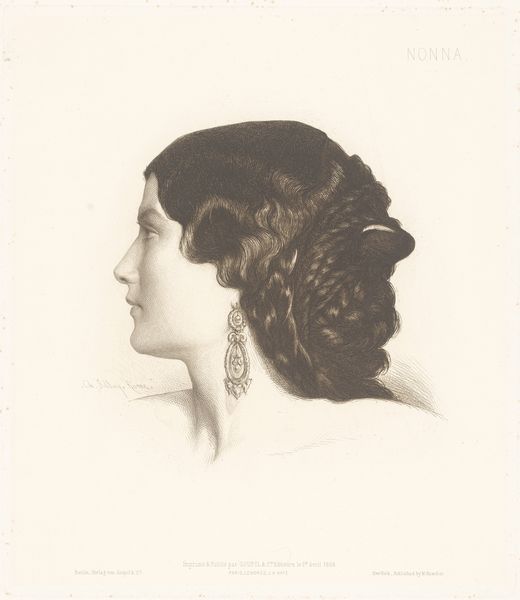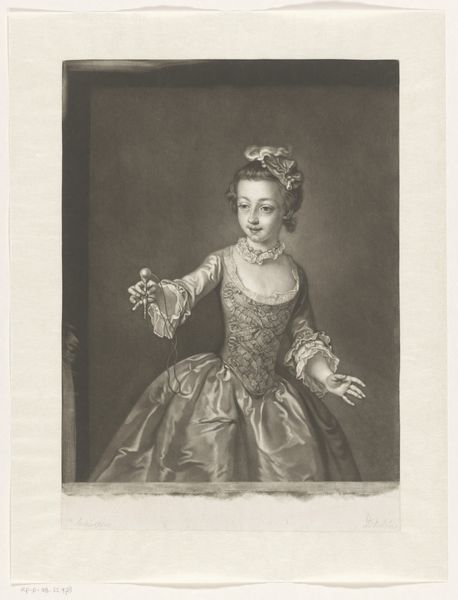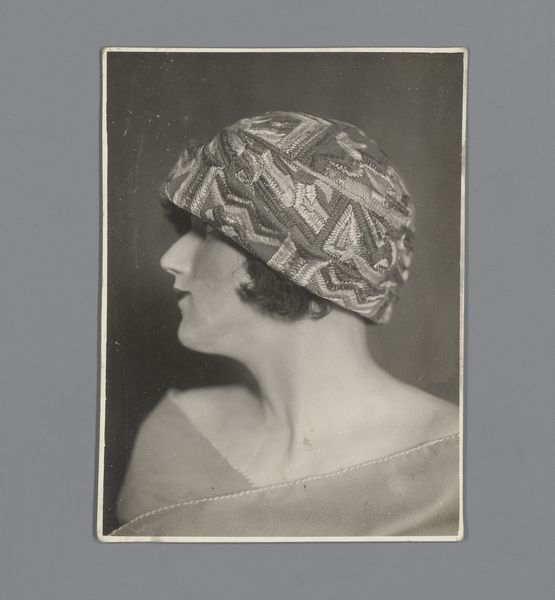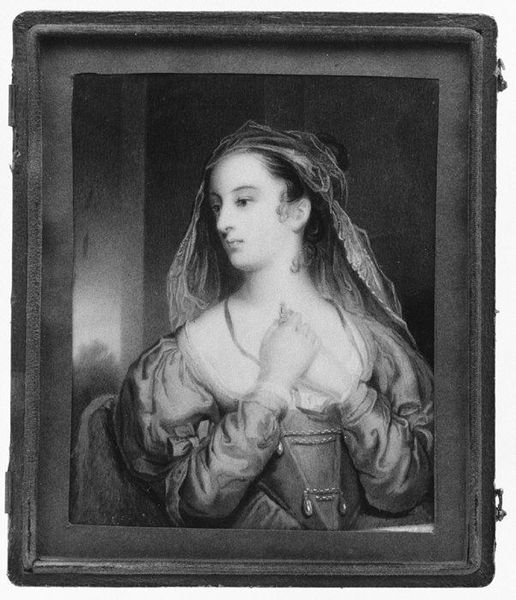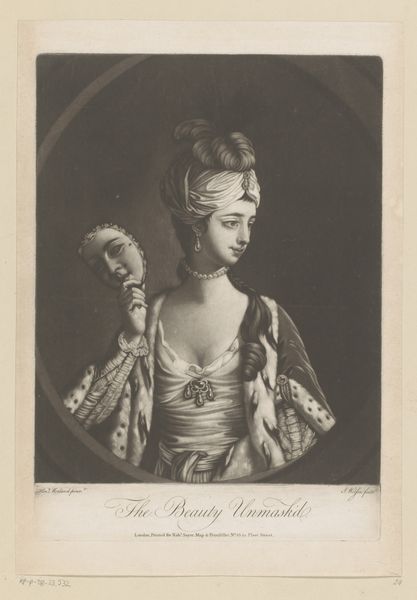
c-print, photography
#
portrait
#
pictures-generation
#
self-portrait
#
conceptual-art
#
head
#
postmodernism
#
pop art
#
c-print
#
mixed mediaart
#
photography
#
pop art-influence
#
identity-politics
#
portrait art
Copyright: Cindy Sherman,Fair Use
Curator: This is Cindy Sherman's "Untitled #211" from 1989, a C-print photograph. Editor: The theatrical staging strikes me immediately. The uncanny makeup, the meticulously crafted costume, it all feels strangely unsettling yet visually arresting. Curator: Sherman is a master of artifice, exploring identity as a construct. Notice how the lighting flattens the space, pushing the figure forward. Her construction and the lack of depth challenges traditional portraiture. Editor: Indeed. It seems to critique how women have been presented in art history. The costume suggests a Renaissance or Baroque portrait, but there’s something decidedly… off. It plays on notions of historical representation, but also female artifice, and challenges societal expectations and beauty standards. Curator: Consider the materiality – the slick surface of the C-print itself. The medium reinforces the superficiality being critiqued, but I also see the use of lighting to focus attention on minute aspects and details within her creation. Editor: It’s unsettling, yes, but is also a pointed commentary on photography’s own ability to distort reality. And what’s more, to sell distorted and unrealistic figures to the masses. I cannot ignore her place within the Pictures Generation and how appropriation challenges originality. Curator: Absolutely. Sherman brilliantly subverts expectations, forcing viewers to confront the constructed nature of representation and, of course, notions of authentic identity. Editor: It’s a powerful example of postmodern photography, deconstructing traditional genres and exploring the complexities of identity, femininity, and the politics of representation. Curator: Agreed, thinking through the visual mechanics is as important as contextual analysis when viewing a work so loaded with social meaning. The composition and framing of it all work together to create something genuinely new. Editor: A fascinating work, really—Sherman compels us to examine our own assumptions about portraiture and the cultural forces that shape who we are or are expected to be.
Comments
No comments
Be the first to comment and join the conversation on the ultimate creative platform.

